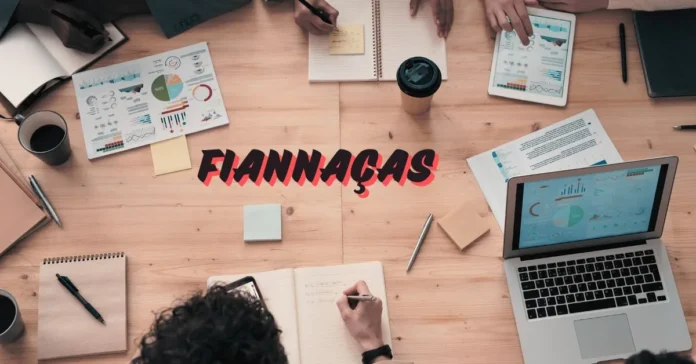Fiannaças is a powerful idea that brings together personal growth, community support, and sustainable practices. It encourages people to work together, share resources, and help each other thrive. By focusing on cooperation and responsible resource management, Fiannaças aims to create a better life for everyone involved. This concept is rooted in history but is very relevant in today’s world, where challenges often feel overwhelming.
In this article, we will explore what Fiannaças means, its historical background, its core principles, and how it can be implemented in our daily lives. By understanding Fiannaças, we can learn how to support one another, build strong communities, and contribute to a sustainable future.
The Origins of Fiannaças
Historical Roots
Fiannaças has its beginnings in ancient societies where survival depended on the community. Early humans learned that sharing resources and working together helped them overcome challenges. When one person struggled, others would step in to lend a hand. This spirit of cooperation laid the foundation for the ideas we now associate with Fiannaças.
As human societies evolved, the concept of Fiannaças also changed. With the development of agriculture and trade, communities became more complex. The simple acts of sharing and supporting each other grew into a more organized system. Fiannaças began to incorporate economic activities and cultural practices that allowed people to thrive together.
Evolution Over Time
Over centuries, Fiannaças adapted to fit the needs of different cultures and societies. What started as basic cooperation evolved into a framework that supports both individual and community growth. The rise of social institutions, like schools and cooperatives, further strengthened the principles of Fiannaças.
Today, Fiannaças is not just about survival; it is about thriving. It includes aspects of sustainability, personal development, and economic stability. This evolution reflects our understanding of how interconnected our lives are and the importance of working together for mutual benefit.
Core Principles of Fiannaças
Collaboration
At the heart of Fiannaças is the principle of collaboration. Working together allows individuals to combine their strengths and tackle challenges that would be difficult to overcome alone. When communities unite, they can achieve common goals more effectively. This sense of unity fosters trust and creates a supportive environment where everyone can contribute.
Collaboration can take many forms. It can be as simple as neighbors helping each other with yard work or as complex as community projects that require collective effort. By engaging in collaborative activities, people build relationships and create a stronger sense of belonging.
Sustainability
Sustainability is another key principle of Fiannaças. This means using resources wisely to meet today’s needs without compromising future generations’ ability to meet theirs. It involves making decisions that are socially responsible, economically viable, and environmentally friendly.
In practice, sustainability can be seen in actions like recycling, conserving energy, and supporting local businesses. By promoting sustainable practices, Fiannaças helps protect the planet and ensures that resources are available for future use.
Growth
Fiannaças also emphasizes the importance of personal and community growth. Personal growth involves acquiring new skills, gaining knowledge, and developing self-awareness. Community growth focuses on creating strong, resilient communities that support social cohesion and improve the quality of life for all members.
Through ongoing development, individuals and communities can adapt to changing circumstances and thrive in the face of challenges. This focus on growth is essential for building a brighter future.
Fiannaças in Today’s World
Modern Examples
Today, the principles of Fiannaças are being applied in various innovative ways. Community gardens are a perfect example of how people can come together to grow food, share resources, and build connections. These gardens not only provide fresh produce but also create a space for people to meet and work together.
Cooperative businesses are another great illustration of Fiannaças in action. These organizations promote shared ownership and decision-making, allowing members to have a say in how the business operates. This cooperative spirit fosters a sense of belonging and empowers individuals.
Benefits of Fiannaças
Embracing Fiannaças brings numerous benefits to individuals and communities alike.
- Personal Growth: Engaging in Fiannaças activities helps individuals develop a sense of purpose, learn new skills, and become more self-aware. These experiences lead to personal empowerment and fulfillment.
- Community Impact: Communities that adopt it principles often experience increased economic stability, improved quality of life, and enhanced social cohesion. Collaborative projects strengthen community ties and create a more supportive environment.
- Economic Advantages: it promotes sustainable business practices that benefit local economies. By minimizing waste and maximizing resource use, communities can build resilience and sustainability.
Challenges and Solutions
Common Obstacles
Implementing Fiannaças can present challenges. One common barrier is resistance to change. People may be reluctant to abandon long-standing practices in favor of new ideas. Additionally, a lack of awareness about it principles can hinder adoption. Some individuals may not fully understand the benefits or how these ideas can be applied in real life.
Addressing Criticisms
Critics often argue that Fiannaças is unrealistic or utopian. These concerns may arise from misconceptions about its nature. To overcome these objections, it is crucial to provide clear explanations of Fiannaças concepts and showcase successful examples. By highlighting practical applications and the tangible benefits of it, we can encourage wider acceptance and implementation.
How to Implement Fiannaças in Your Life
Practical Steps
- Educate Yourself: Begin by learning about Fiannaças and its principles. Understanding how these ideas can be applied to everyday life will help you see their value.
- Engage with Your Community: Participate in local initiatives that align with it values. This involvement promotes relationships and fosters collaboration.
- Practice Sustainability: Adopt environmentally friendly habits, such as recycling and conserving energy. These practices support resource conservation and demonstrate your commitment to sustainability.
- Collaborate: Work with others to achieve shared goals, whether in business or community settings. Collaboration strengthens group efforts and leads to collective success.
Real-Life Examples
Consider joining a local cooperative or community garden. These activities provide hands-on experience with Fiannaças principles and illustrate their real-world applications. By getting involved, you can benefit personally while also promoting the spread of it in your community.
Fiannaças and Education
Role in Schools and Universities
Educational institutions play a crucial role in promoting it. By incorporating its principles into curricula, schools and universities can teach students the importance of community, sustainability, and personal development. This education helps cultivate socially and environmentally conscious individuals.
Programs and Resources
Many resources are available to support Fiannaças education. Workshops, online courses, and community projects provide valuable learning opportunities for those interested in the concept. These resources offer guidance on how to implement it in various contexts.
Fiannaças in Business
Corporate Applications
Businesses can embrace Fiannaças principles to create sustainable practices and foster a collaborative work culture. This approach not only benefits the environment but also enhances customer loyalty and brand reputation.
Successful Examples
Companies like Ben & Jerry’s and Patagonia exemplify Fiannaças in action. Both brands prioritize social responsibility and environmental sustainability, demonstrating how it can lead to business success. These examples show that Fiannaças concepts can be integrated into corporate strategies effectively.
Fiannaças and Technology
Technological Advancements
Technology has greatly enhanced Fiannaças practices. Innovations in digital communication, renewable energy, and resource management have improved the effectiveness and reach of it initiatives. Technology makes it easier for communities to collaborate and implement sustainable solutions.
Future Trends
Emerging technologies, such as blockchain and artificial intelligence, could further transform Fiannaças. These advancements may increase transparency, streamline resource management, and foster greater interconnectedness, making It techniques even more powerful in addressing global challenges.
Cultural Impact
Influence on Various Cultures
Fiannaças influences diverse cultures around the world. Each culture adapts It principles to fit its unique context, enriching the variety of practices globally. This intercultural exchange deepens our understanding of Fiannaças and highlights its relevance across different societies.
Global Perspectives
It is present in various forms worldwide, from Asia to Africa and Europe to the Americas. Understanding these global perspectives emphasizes Fiannaças’ adaptability and capacity to address various needs and challenges.
Fiannaças and Sustainability
Environmental Considerations
It places a strong emphasis on environmental conservation. By promoting actions that reduce climate change effects, conserve resources, and protect ecosystems, it contributes to the planet’s health.
Sustainable Practices
It encourages the adoption of renewable energy sources, composting, and recycling. These practices are vital for minimizing environmental impact and promoting global well-being. By integrating these habits into daily life, individuals can contribute to long-term sustainability.
Debunking Myths
Common Misconceptions
Many myths surround It , such as the belief that it focuses solely on communal issues or that it is overly idealistic. These misconceptions can hinder the broader adoption of it principles.
Clarifying the Concept
It is not just an aspirational concept; it has practical applications with real benefits. By understanding its core ideas, real-world uses, and flexibility, we can dispel myths and promote wider acceptance of it.

The Future of Fiannaças
Predictions and Trends
It is poised for a bright future as awareness and understanding continue to grow. Emerging trends indicate a shift towards more community-focused and sustainable practices, driven by both grassroots movements and institutional support.
Long-term Impact
It has the potential to transform societies by enhancing sustainability, harmony, and resilience. Its holistic approach to personal development, community support, and economic sustainability offers hope for a better future for all.
Conclusion
In conclusion, it teaches us the importance of working together and supporting each other. It shows how we can build strong communities where everyone feels happy and safe. By sharing resources and ideas, we can help each other grow and face challenges together.
This concept is not just for big groups; it can be practiced in our daily lives, too! Simple actions like helping a neighbor or starting a community garden can make a big difference. Embracing it can lead to a brighter future for everyone!
FAQs
Q: What does it mean?
A: It means working together and supporting each other in our communities to grow and succeed.
Q: How can I practice it?
A: You can practice it by helping your neighbors, joining community projects, or sharing resources with friends.
Q: Why is sustainability important in it?
A: Sustainability helps us use resources wisely so we can protect the environment for future generations.
Q: Can schools teach it?
A: Yes! Schools can teach it by encouraging teamwork, community service, and sustainable practices.
Q: What are some examples of it in action?
A: Examples include community gardens, cooperatives, and local clean-up events where people work together for a common goal.

